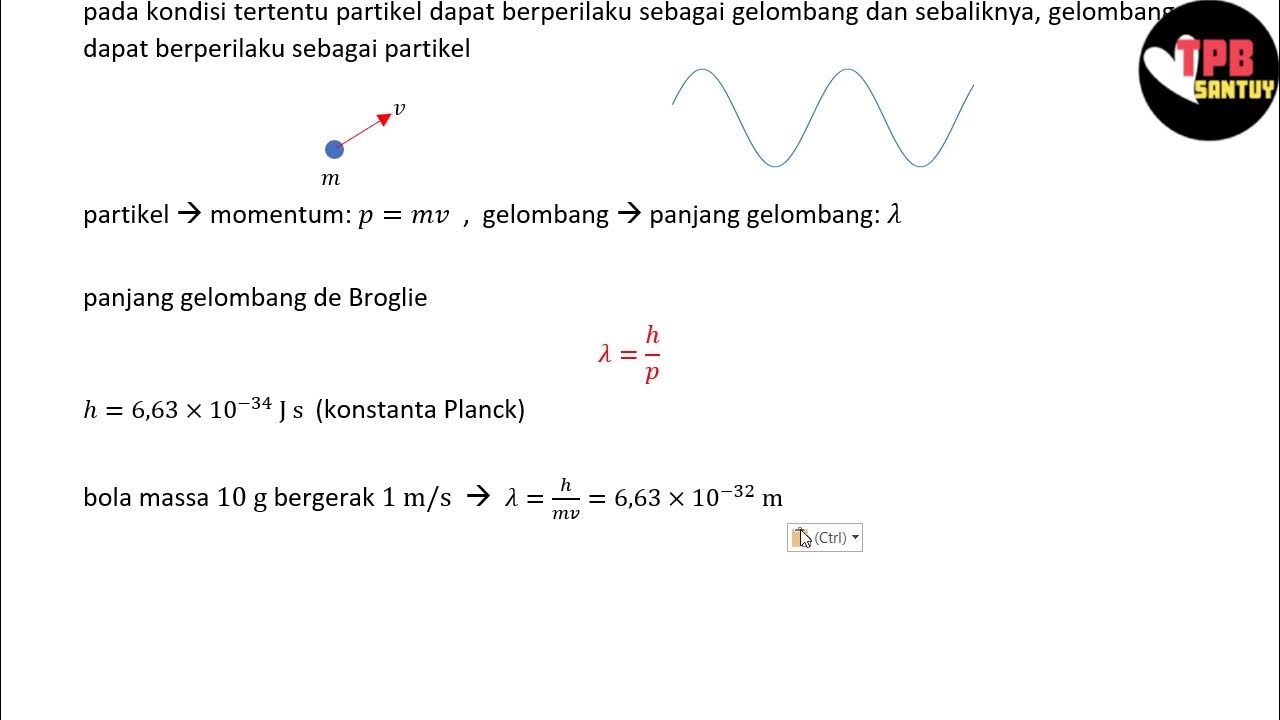1 WaveProperties
Summary
TLDRThis video introduces the essential concept of waves in physics, focusing on their properties and vocabulary. Waves are energy moving through space, not physical matter. Key concepts include wave sources, the medium, wave propagation types (transverse and longitudinal), and important vocabulary such as crest, trough, amplitude, and cycle. The video explains how the amplitude relates to energy, with examples like water waves and slinky demonstrations. Understanding waves helps in recognizing how energy moves through different media, and the video encourages active note-taking and participation in quizzes to reinforce the learning process.
Takeaways
- 😀 Waves are energy moving through space, not made up of physical matter.
- 😀 All waves have a source that causes the vibration or movement, initiating the wave.
- 😀 A wave requires a medium to travel through, such as water, air, or a slinky.
- 😀 The medium is the material that the wave moves through, but the wave itself is the energy, not the material.
- 😀 Transverse waves move the medium perpendicular to the wave's velocity, whereas longitudinal waves move the medium parallel to the wave's velocity.
- 😀 The crest of a wave represents the highest point, while the trough represents the lowest point.
- 😀 Amplitude refers to the height of the wave and is related to the energy of the wave.
- 😀 A cycle in a wave refers to a complete wave, consisting of a crest and a trough.
- 😀 Low amplitude waves carry less energy (like a baby splashing in a bathtub) compared to high amplitude waves (like a tsunami).
- 😀 Wave sources can create either a single pulse (wave pulse) or a continuous sequence of waves (periodic waves).
- 😀 The shape of the wave pulse depends on the movement of the wave source, which can create different wave shapes like square, triangle, or sawtooth waves.
Q & A
What is the definition of a wave in physics?
-A wave is defined as energy moving through space. It is not made up of physical matter but consists of energy traveling through a medium.
What is the role of the wave source in a wave?
-The wave source is the element that causes the initial vibration or 'jiggle' that moves through the medium. Without a wave source, there would be no wave.
What is a medium in relation to a wave?
-The medium is the material through which the wave travels. It can be anything from water to air, slinky, or any other material that supports wave movement.
How does a slinky illustrate the concept of wave propagation?
-When a person moves one end of a slinky up and down, the slinky itself vibrates, and this vibration moves through the medium, demonstrating how energy travels through a medium without the medium itself moving across space.
What is the difference between a transverse wave and a longitudinal wave?
-In a transverse wave, the medium vibrates perpendicular to the wave's direction of motion, while in a longitudinal wave, the medium vibrates parallel to the wave's direction of motion.
Can you give an example of each type of wave (transverse and longitudinal)?
-An example of a transverse wave is a wave moving through a slinky, where the coils move up and down as the wave moves horizontally. An example of a longitudinal wave is a slinky vibrating back and forth in the direction of the wave's motion.
What is the crest of a wave?
-The crest is the highest point of a wave, representing the peak of a wave pulse.
What is the amplitude of a wave and why is it important?
-Amplitude is the height of the wave, measured from the equilibrium position (the middle point of the wave). It indicates the amount of energy in the wave; higher amplitude waves have more energy.
What is a wave cycle?
-A wave cycle refers to one complete wave, consisting of a crest and a trough. It represents the full oscillation of the wave.
How does the shape of a wave pulse depend on the wave source?
-The shape of the wave pulse depends on how the wave source moves. For instance, if the source moves gently, the wave may have a snake-like shape, while if the source moves rapidly, the wave can form square, triangular, or sawtooth patterns.
Outlines

This section is available to paid users only. Please upgrade to access this part.
Upgrade NowMindmap

This section is available to paid users only. Please upgrade to access this part.
Upgrade NowKeywords

This section is available to paid users only. Please upgrade to access this part.
Upgrade NowHighlights

This section is available to paid users only. Please upgrade to access this part.
Upgrade NowTranscripts

This section is available to paid users only. Please upgrade to access this part.
Upgrade NowBrowse More Related Video

Gelombang Fisika Kelas 11 • Part 1: Definisi, Jenis dan Sifat-Sifat Dasar Gelombang

Ondas - Aula 01 (Mecânica / Eletromagnética)

Dualisme Gelombang-Partikel | Fenomena Kuantum | Part 1 | Fisika Dasar

Apa Itu Gelombang? Penjelasan Mudah Tentang Fenomena Gelombang

O que é uma Onda?

Physics - Waves - Introduction - Definitions, Logintudinal and Transverse.
5.0 / 5 (0 votes)